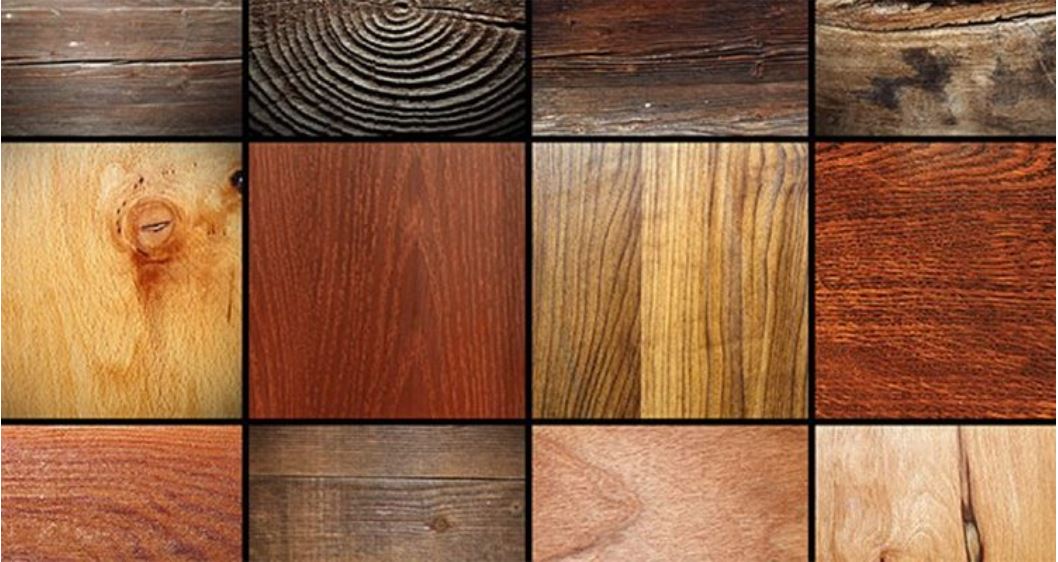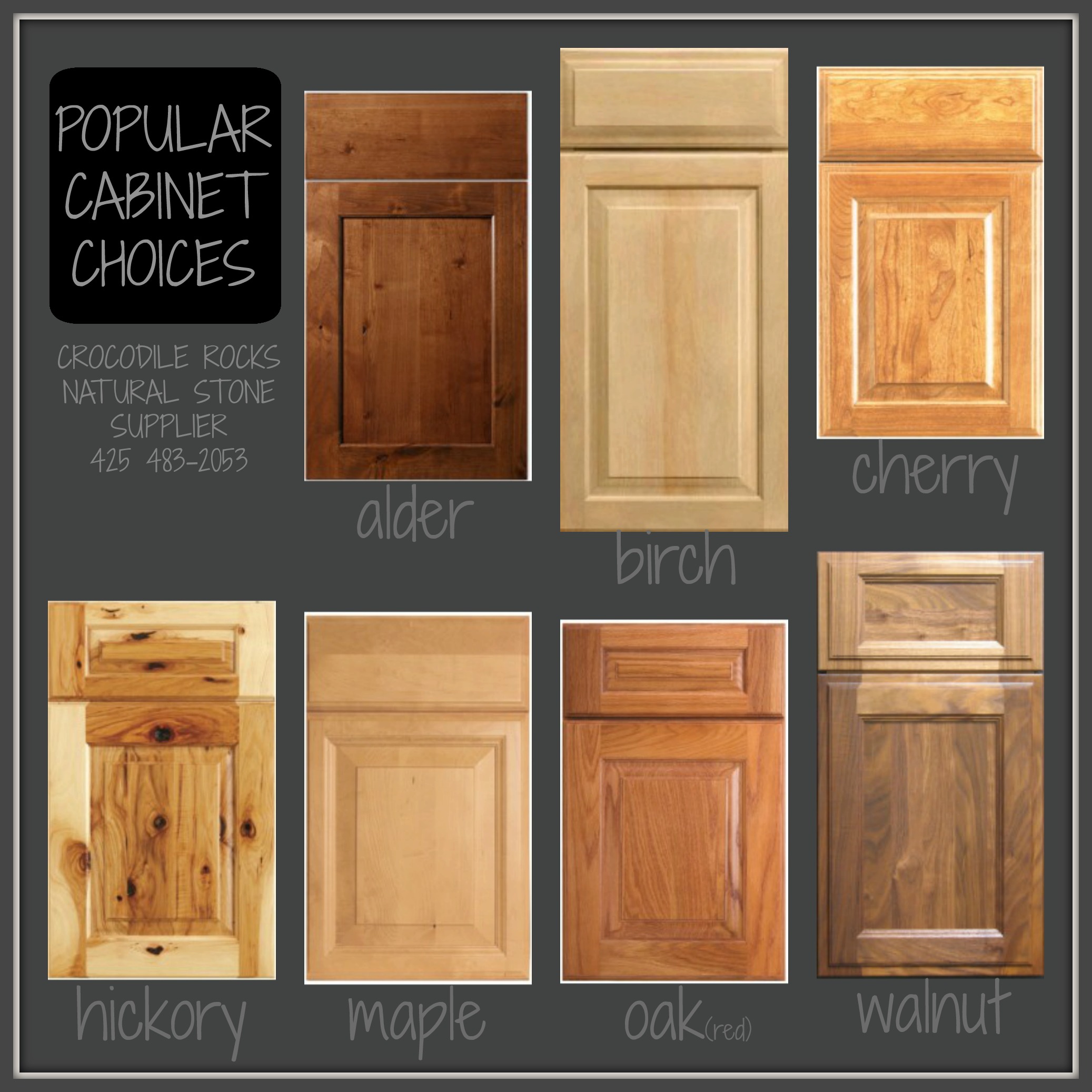Types of Wood Used for Cabinets

Choosing the right wood for your cabinets is a crucial decision that will affect their appearance, durability, and overall cost. The type of wood you select will determine the grain pattern, color, and even the weight of your cabinets. Understanding the characteristics of different wood species can help you make an informed decision that aligns with your design preferences and budget.
Popular Wood Species for Cabinet Construction
The choice of wood for cabinet construction is often influenced by factors such as desired aesthetics, durability requirements, and budget. Here are some of the most popular wood species used for cabinets, along with their unique properties:
- Maple: Known for its smooth, tight grain and light to medium brown color, maple is a durable and versatile wood. It is often used for kitchen cabinets, bathroom vanities, and other high-end furniture. Maple is resistant to scratches and dents, making it a good choice for high-traffic areas.
- Cherry: With a warm reddish-brown hue and a distinctive grain pattern, cherry wood is a popular choice for traditional and contemporary cabinets. It ages gracefully over time, developing a rich patina. Cherry is relatively soft, making it easier to work with, but it can be susceptible to scratches and dents.
- Oak: Renowned for its strength and durability, oak is a classic choice for cabinet construction. It comes in a variety of colors, from light blonde to deep reddish-brown. Oak is also known for its distinctive grain pattern, which adds visual interest to cabinets.
- Walnut: Walnut is prized for its rich, dark brown color and intricate grain patterns. It is a strong and durable wood, making it suitable for both traditional and modern cabinet designs. Walnut is often used for high-end cabinets due to its beauty and cost.
- Alder: A softer wood with a light to medium brown color, alder is known for its smooth, even grain. It is a popular choice for cabinet doors and drawer fronts due to its ability to accept paint and stains well. Alder is also relatively affordable compared to other hardwoods.
- Pine: Pine is a softwood that is often used for budget-friendly cabinets. It has a distinctive knotty grain pattern and a light yellow to reddish-brown color. Pine is relatively easy to work with, but it is not as durable as hardwoods.
Cabinet Construction Techniques: Kinds Of Wood Cabinets

Cabinet construction techniques play a vital role in determining the durability, aesthetics, and overall quality of cabinets. Understanding these techniques helps homeowners and designers make informed decisions about the construction of their cabinets.
Frame and Panel Construction
Frame and panel construction is a traditional and robust method widely used in cabinet making. It involves creating a sturdy frame from solid wood pieces, typically using mortise and tenon joints or dado joints. The frame is then fitted with a panel, often made of plywood or MDF, which provides structural support and a smooth surface for finishing.
Advantages of Frame and Panel Construction:
- Strength and Durability: The frame and panel design creates a rigid structure that can withstand heavy loads and resist warping. The panel acts as a stabilizing element, preventing the frame from twisting or bowing.
- Stability: The panel helps to maintain the dimensional stability of the cabinet, preventing it from expanding or contracting with changes in humidity or temperature.
- Versatility: Frame and panel construction is adaptable to various cabinet styles and designs. Different frame profiles, panel materials, and decorative elements can be incorporated to create unique looks.
- Cost-Effective: While solid wood frames can be more expensive, using plywood or MDF panels can help reduce the overall cost of the cabinet.
Disadvantages of Frame and Panel Construction:
- Labor-Intensive: Constructing a frame and panel cabinet requires skilled craftsmanship and can be time-consuming.
- Potentially Expensive: Using solid wood for the frame can increase the cost of the cabinet, especially for high-quality hardwoods.
Mitered Construction
Mitered construction involves joining pieces of wood at 45-degree angles to create corners. This technique is often used for cabinets with simple designs, such as base cabinets and upper cabinets.
Advantages of Mitered Construction:
- Simplicity: Mitered joints are relatively easy to cut and assemble, making this technique suitable for DIY projects.
- Clean Lines: The mitered corners create a clean and polished look, especially when using high-quality wood and finishing techniques.
- Cost-Effective: Mitered construction typically uses less wood compared to other techniques, reducing material costs.
Disadvantages of Mitered Construction:
- Less Durable: Mitered joints are weaker than other types of joints, particularly when subjected to heavy loads or stress.
- Susceptible to Movement: The mitered corners can loosen over time, especially if the wood expands or contracts with changes in humidity.
- Requires Precise Cutting: Accurate cuts are crucial for a strong and visually appealing mitered joint. Inaccurate cuts can result in gaps or misaligned corners.
Dovetail Construction, Kinds of wood cabinets
Dovetail joints are a traditional woodworking technique that involves interlocking pieces of wood to create a strong and visually appealing joint. Dovetail joints are often used for cabinet drawers, where strength and stability are essential.
Advantages of Dovetail Construction:
- Strength and Durability: Dovetail joints are renowned for their strength and durability, providing a secure and lasting connection between pieces of wood.
- Aesthetics: The intricate interlocking pattern of dovetail joints adds a touch of craftsmanship and elegance to cabinets.
- Resistance to Movement: Dovetail joints are highly resistant to movement, preventing drawers from sagging or becoming misaligned over time.
Disadvantages of Dovetail Construction:
- Labor-Intensive: Cutting and assembling dovetail joints requires skilled craftsmanship and can be time-consuming.
- Potentially Expensive: Dovetail joints often involve more material and labor, which can increase the cost of the cabinet.
Table of Cabinet Construction Techniques
| Construction Technique | Key Features | Suitable Applications |
|---|---|---|
| Frame and Panel | Strong, durable, versatile, cost-effective (with plywood or MDF panels) | Base cabinets, upper cabinets, custom cabinets |
| Mitered | Simple, clean lines, cost-effective | Base cabinets, upper cabinets, simple cabinets |
| Dovetail | Strong, durable, aesthetically pleasing, resistant to movement | Drawers, high-end cabinets |
Cabinet Styles and Finishes

Cabinet styles and finishes play a significant role in determining the overall aesthetic and functionality of your kitchen. The choice of style and finish can significantly impact the look and feel of your kitchen, reflecting your personal taste and design preferences.
Cabinet Styles
Cabinet styles are broadly categorized into traditional, transitional, and modern, each characterized by specific design elements and aesthetic appeal.
- Traditional Cabinet Styles: These styles typically feature intricate details, ornate moldings, and classic designs. Examples include:
- Shaker: Known for their simple, clean lines and flat-panel doors, Shaker cabinets offer a timeless and elegant aesthetic.
- Raised Panel: Characterized by raised panels on the doors, creating a subtle, three-dimensional effect.
- Beaded Inset: Featuring inset doors with beaded edges, these cabinets offer a traditional and sophisticated look.
- Transitional Cabinet Styles: Blending traditional and modern elements, transitional cabinets offer a balanced and versatile aesthetic.
- Slab: Simple and sleek, slab cabinets feature flat doors with no ornamentation.
- Recessed Panel: Featuring a recessed panel on the door, creating a subtle depth and visual interest.
- Modern Cabinet Styles: Modern cabinets embrace clean lines, minimalist designs, and contemporary materials.
- Frameless: Featuring a minimalist design with no visible frames around the doors, frameless cabinets offer a sleek and contemporary look.
- High-Gloss: Polished surfaces create a reflective and modern aesthetic, enhancing the overall brightness of the kitchen.
Cabinet Finishes
Cabinet finishes play a crucial role in determining the overall look and feel of your kitchen. They provide protection, enhance the aesthetic appeal, and contribute to the durability of the cabinets.
- Paint: Offering a wide range of colors and finishes, paint provides a versatile and customizable option for cabinets.
- Matte: Provides a subtle, non-reflective finish, ideal for creating a classic and understated look.
- Semi-Gloss: Offers a slightly reflective finish, providing a balance between sheen and durability.
- Gloss: Creates a high-gloss, reflective finish, adding a touch of sophistication and elegance.
- Stains: Stains penetrate the wood, enhancing its natural grain and color while preserving its texture.
- Water-Based Stains: Environmentally friendly and easy to apply, water-based stains offer a natural and subtle finish.
- Oil-Based Stains: Known for their deep penetration and rich color, oil-based stains provide a durable and classic finish.
- Varnishes: Varnishes provide a protective coating that enhances the durability and longevity of cabinets.
- Polyurethane: A durable and water-resistant varnish, offering excellent protection against scratches and stains.
- Lacquer: Known for its high-gloss finish and durability, lacquer is often used for high-end cabinets.
Kinds of wood cabinets – The choice of wood for your cabinets can significantly impact the overall aesthetic of your bedroom. From the rustic charm of oak to the sleek elegance of walnut, each wood species offers a unique character. But beyond the visual appeal, consider the practicalities of your space.
A small trash can for bedroom, like the ones found here , can help maintain a tidy environment. And just as you’d choose a wood that complements your furniture, a discreet trash can can seamlessly integrate into the design, enhancing both form and function.
Choosing the right kind of wood for your cabinets can be a personal decision, reflecting your style and preferences. If you’re looking for a way to maximize space and create a more organized environment, consider the benefits of a bedroom small walk-in closet.
This can help you keep your clothes and accessories neatly stored while also adding a touch of elegance to your bedroom. And with so many wood options available, you can find the perfect match for your walk-in closet, whether it’s a classic oak, a modern walnut, or a rustic reclaimed wood.
